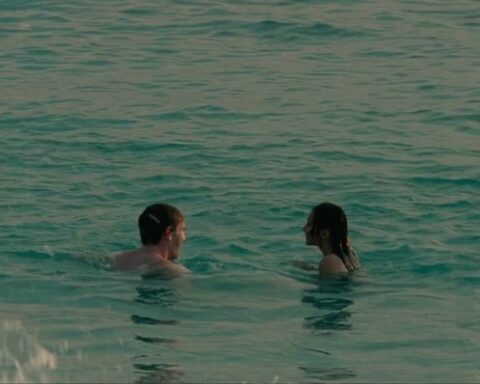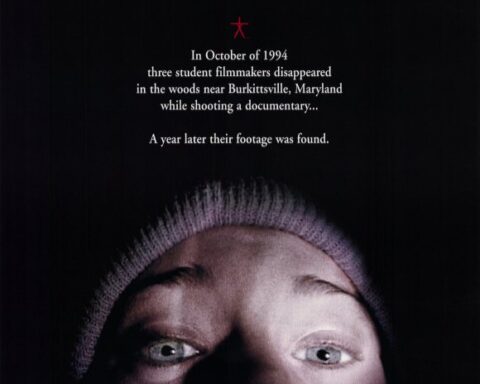About Jaws
Title: Jaws 1975
Director: Steven Spielberg
Cast: Roy Scheider, Robert Shaw, Richard Dreyfuss, Lorraine Gary, Murray Hamilton
Box Office: Grossed over $470 million worldwide, becoming the highest-grossing film of its time.
Overview: A Cinematic Game-Changer
“Jaws,” released in 1975, is widely regarded as a seminal work in the history of cinema, and for good reason. Directed by a then-relatively unknown Steven Spielberg, “Jaws” became a cultural phenomenon that redefined the thriller genre and set the stage for the modern blockbuster era. Based on Peter Benchley’s 1974 novel, the film tells the story of a great white shark terrorizing the small, fictional resort town of Amity Island. The movie’s groundbreaking use of suspense, combined with its unforgettable characters and iconic musical score, cemented Spielberg’s reputation as one of Hollywood’s most innovative directors.
One of the unique aspects of “Jaws” is how it turned production challenges into cinematic strengths. The film’s notorious mechanical shark, named “Bruce,” malfunctioned frequently during filming, forcing Spielberg to think creatively. Instead of showing the shark outright, Spielberg opted to suggest its presence through indirect visual cues and, most importantly, through sound. This decision not only heightened the suspense but also allowed the audience’s imagination to fill in the gaps, making the shark seem even more terrifying.
Spielberg’s Unique Directorial Choices: Mastering Suspense
One of Spielberg’s most ingenious decisions in “Jaws” was to withhold the full reveal of the shark until well into the film. This choice was partly due to the mechanical failures of the shark prop, but it also served to build suspense and tension. By keeping the shark mostly unseen, Spielberg tapped into the audience’s fear of the unknown. The film uses point-of-view shots from the shark’s perspective, allowing viewers to experience the terror firsthand. These shots, combined with the iconic dorsal fin cutting through the water, create a sense of impending doom that is far more effective than a direct visual of the shark could have been.
This approach is a masterclass in suspense, demonstrating Spielberg’s understanding that what you don’t show can be just as powerful—if not more so—than what you do. The decision to focus on the characters’ reactions to the shark, rather than the shark itself, further amplifies the terror. Spielberg uses the audience’s imagination as a tool, making the unseen shark a constant, looming threat.
Spielberg also leveraged the environment to enhance the horror. The film was shot on location in Martha’s Vineyard, Massachusetts, a decision that added authenticity and realism to the film. The real ocean setting, as opposed to a controlled studio environment, contributed to the film’s sense of isolation and vulnerability. The small, idyllic town of Amity Island, with its calm waters and sunny beaches, provided a stark contrast to the horror that unfolds, making the shark attacks even more shocking.

The Power of the Motif: The Shark Theme in Jaws
A key element that makes “Jaws” so effective is its use of an auditory motif—a recurring musical theme that signals the presence of the shark. Composed by John Williams, the shark’s theme is a simple, two-note pattern that becomes synonymous with the predator’s approach. This motif is not just a piece of music; it’s a psychological tool that creates tension and fear.
In filmmaking, a motif is a recurring element—whether visual, auditory, or thematic—that carries symbolic significance and reinforces the narrative. In “Jaws,” the shark’s theme serves multiple purposes:
- Building Anticipation and Suspense: The motif begins quietly and gradually builds in intensity, mimicking the shark’s approach. This auditory cue tells the audience that danger is near, even if the shark isn’t visible. The music effectively becomes the shark, creating a sense of impending doom whenever it plays.
- Engaging the Audience’s Imagination: The simplicity of the motif—just two alternating notes—taps into primal fears. The repetition of these notes creates a sense of inevitability, as if the shark’s attack is unavoidable. By using this sound to represent the shark, Spielberg allows the audience to feel the presence of the creature even when it’s off-screen. This use of sound engages the viewer’s imagination, making the unseen shark more terrifying.
- Symbolizing the Shark’s Relentless Nature: The motif is a perfect representation of the shark’s character—unstoppable, relentless, and ever-present. The music becomes a symbol of the shark’s unyielding pursuit, reminding the audience that it could strike at any moment.
The effectiveness of this motif lies in its ability to evoke a visceral reaction. The moment those two notes begin, the audience’s heart rate spikes, and a sense of dread fills the room. It’s a testament to the power of sound in filmmaking, showing how a simple auditory cue can shape the entire mood and tone of a film.

Why Motifs Matter in Filmmaking
Motifs are crucial storytelling tools that can add depth, cohesion, and meaning to a film. Whether auditory, visual, or thematic, motifs help to reinforce the film’s central ideas and themes. In “Jaws,” the shark motif serves as a constant reminder of the danger lurking beneath the surface, keeping the audience on edge throughout the film.
- Reinforcing Themes: Motifs can underscore the themes of a film, making them more apparent to the audience. For example, in “Jaws,” the shark motif reinforces the theme of man versus nature, highlighting the idea that the shark is an unstoppable force that humans cannot control.
- Creating Narrative Unity: By recurring throughout the film, motifs create a sense of unity and continuity. In “Jaws,” the shark motif ties together the various scenes of the film, making the narrative feel more cohesive. The repetition of the motif also serves to build tension, as the audience knows that whenever they hear it, the shark is near.
- Eliciting Emotional Responses: Motifs can evoke specific emotions in the audience, whether it’s fear, joy, sadness, or nostalgia. In “Jaws,” the shark motif is designed to evoke fear and anxiety, putting the audience on high alert. This emotional response is critical to the film’s effectiveness as a thriller.
- Character Representation: Motifs can also be used to represent characters or their development. In “Jaws,” the shark motif is directly associated with the shark itself, making the creature’s presence felt even when it’s off-screen. This use of a motif to represent a character is a powerful way to give that character a larger-than-life presence.
Incorporating Motifs into Your Film
For filmmakers looking to incorporate motifs into their own work, there are several strategies to consider:
- Simplicity is Key: The most effective motifs are often the simplest. The “Jaws” motif is just two notes, yet it has become one of the most iconic pieces of music in film history. When creating a motif, focus on a simple, memorable element that can be repeated throughout the film.
- Tie the Motif to Key Themes or Characters: A motif should be closely associated with the film’s central themes or characters. In “Jaws,” the shark motif represents both the shark itself and the broader theme of nature’s power. By tying your motif to an important element of the story, you ensure that it has a meaningful impact on the audience.
- Use the Motif to Build Tension: Repeating a motif at key moments in the film can help build tension and anticipation. In “Jaws,” the shark motif plays whenever the shark is near, creating a sense of dread that builds with each repetition. Consider how you can use a motif to signal important moments in your film, keeping the audience engaged and on edge.
- Be Consistent: A motif should recur throughout the film, creating a sense of continuity. Whether it’s a piece of music, a visual element, or a line of dialogue, make sure the motif appears at regular intervals to reinforce its significance.
- Experiment with Variations: While consistency is important, varying the motif slightly can add depth and complexity. For example, in “Jaws,” the motif starts softly and builds in intensity, creating a sense of escalation. Experiment with different variations of your motif to see how they can enhance the story.
Legacy and Impact of Jaws
“Jaws” not only became a landmark film in Spielberg’s career but also changed the movie industry forever. It was the first film to gross over $100 million in the U.S., and its success led to the concept of the summer blockbuster—a major studio release designed to draw in massive audiences during the summer months. The film’s wide release, unprecedented marketing campaign, and strategic timing set the template for how Hollywood studios would release their biggest films in the decades to come.
More than 45 years later, “Jaws” remains a benchmark for thriller films. Its blend of masterful direction, groundbreaking score, and unforgettable performances ensures that it continues to captivate audiences. Spielberg’s innovative approach and Williams’ iconic soundtrack combined to create a film that is as terrifying today as it was upon its release.
“Jaws” is more than just a movie—it’s a cultural phenomenon that continues to influence filmmakers and thrill audiences worldwide. Its legacy is a testament to the power of storytelling and the enduring appeal of well-crafted suspense.
In summary, the motif in “Jaws”—the simple, repetitive two-note sequence—demonstrates the profound impact that a well-crafted auditory cue can have on a film. It’s a reminder that incinema, a well-crafted motif is a powerful tool. It’s not just about what the audience sees, but what they hear and feel. Motifs create a connection between the film and the viewer, drawing them deeper into the story and heightening the emotional impact. “Jaws” shows how even a simple musical phrase can become iconic, influencing how audiences perceive the entire film. For filmmakers, the lesson is clear: use motifs wisely, and they can become the heartbeat of your story, leaving a lasting impression on your audience.










